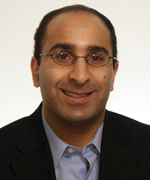Screening for Sleep Apnea in Stroke and TIA Patients using a Portable Sleep Monitor: A Randomized Controlled Trial
Quality and Safety
Highlights
In a randomized controlled trial of stroke/TIA patients, use of home sleep apnea testing compared to in-laboratory polysomnography increased the rate of obstructive sleep apnea (OSA) diagnosis and treatment, reduced daytime sleepiness, improved functional outcomes, and was a cost-effective approach. This novel ambulatory approach to OSA detection may also improve outcomes and reduce expenditures in other clinical populations. Moreover, our results suggest that future funding arrangements should be aligned to encourage more home-based sleep investigations.
Abstract
Background: Obstructive sleep apnea (OSA) occurs in the majority of patients with stroke/TIA and is linked with numerous unfavourable health consequences. Despite being readily treatable, OSA remains underdiagnosed in this clinical setting. One reason is because in-laboratory polysomnography (PSG), the gold standard for assessing OSA, is limited by low availability and patient inconvenience. Fortunately, home sleep apnea tests (HSAT) can also accurately diagnose OSA, and are much more accessible and convenient compared to in-laboratory PSG.
Objectives: To determine whether screening for OSA using HSAT, compared to usual care with in-laboratory PSG, significantly increases the proportion of patients (i) diagnosed with OSA and (ii) managed with continuous positive airway pressure (CPAP), as well as improves (iii) daytime sleepiness and (iv) functional outcomes at 6 months. We also assessed whether HSAT, compared to PSG, was a cost-effective method for diagnosing OSA.
Methods: We consecutively recruited 250 patients who had sustained a stroke or TIA within the last 6 months. Patients were randomized (1:1) to use of (i) HSAT vs. (ii) in-laboratory PSG. Outcomes were assessed at 6 months.
Results: At 6 months, a significantly greater proportion of patients in the HSAT arm had been diagnosed with OSA and prescribed CPAP; patients in the HSAT arm also reported significantly reduced daytime sleepiness and a greater ability to perform daily activities. Moreover, a cost-effectiveness analysis revealed that HSAT was less costly and more effective for the detection of OSA compared to usual care using in-laboratory PSG.
Conclusion: In stroke/TIA patients, use of HSAT compared to PSG increases rates of OSA diagnosis and treatment, reduces daytime sleepiness, improves functional outcomes, and is a cost-effective approach.
 Mark Boulos" class="rev-slidebg tp-rs-img" data-no-retina>
Mark Boulos" class="rev-slidebg tp-rs-img" data-no-retina>
